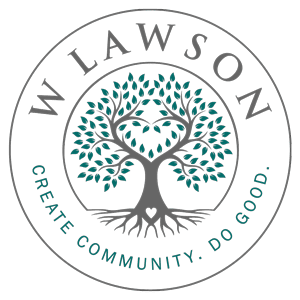
Featured Article: The Embedded Challenges of Recruiting Leaders of Color
This article was originally posted on Senior Options: https://senioroptions.net/wp-content/uploads/2021/05/SO-Article-7-Voices-of-Diversity-51821-REV-1.pdf
Marvell Adams, Jr. has worked in the Kendal system since 2011. Currently, he serves the residents, staff, and board members as Chief Operating Officer, only the second individual in Kendal’s history to serve in the role. Prior to that, Marvell was the CEO of Collington-a Kendal Affiliate in Maryland.
I had the opportunity to talk with Marvell. I started by asking him how he came to the aging services field. Marvell replied, “I planned this. I reported on Alzheimer’s disease in ninth grade. I was awestruck by it and amazed at this disease that could steal one’s memories.” Marvell started pre-med in college, wanting to be a geriatrician, and at the age of 19, he realized that being a physician wasn’t his path. Fortunately, a professor encouraged him to look at health care administration. After college, he got his administrator’s license and took a job as a nursing home administrator, a role that later expanded.
Conversations on Diversity and Inclusion
Marvell shared a story of being at the LeadingAge conference 2019 in San Diego, notable for being the first-time colleagues approached him about diversity in our field. As gold sponsors were being announced in the general session, Marvell was working in another room on a presentation he was doing later in the conference on the lack of diversity among emerging leaders. The gold sponsors came up on stage, and all were white males. Marvell re-appointed to the LeadingAge board, and pictures of all the board members were on the screen at this time. “It was stark, of course, it was. All middle-aged white men walked up on the stage as our gold sponsors, the leaders. That is juxtaposed with a picture of me.” Marvell describes what happened next as the first time people in our field wanted to talk about diversity with him. “People were coming out of the session, and I was coming out of my meeting. Robyn Stone, LeadingAge Senior Vice President for Research, and Co-Director LeadingAge LTSS Center at UMASS, stopped me, ‘We gotta do something.’ I didn’t know what she was talking about. She described it to me.”
“The next thing I know, I am standing in the main lobby with a group of people around me, and the conversation is about the lack of diversity in leadership in our field. Particularly when you put it alongside the tremendous amount of diversity in our hourly and direct-care workers in some parts of the country, that contradiction is something we have to tackle.”
“I had never spoken publicly about the lack of diversity and inclusion in our space. It’s rare for me to run into another black person at LeadingAge events. It’s almost comical. It is difficult actually to find someone who is Black, Indigenous, People of Color (BIPOC). I started thinking about what that meant for our industry, and with the help of my assistant, Pam Moriarty, I wanted to see what the makeup of the LeadingAge Ziegler 200 CEOs looks like. And I created a collage, a graphic of all the CEOs. One individual who was black.” A representation of this collage is pictured above.
For most folks, it has been very jarring. “This is the epitome of what systemic racism looks like. It’s not as if people in our industry have conspired to keep people of color out of leadership. The system itself is geared toward staying the same.” “By and large, the executive recruitment infrastructure in our field is monochromatic. The entire governance structure in our field is monochromatic. And the executive leadership is monochromatic.”
Is there an opportunity now to increase diversity with the number of retiring CEOs?
Marvell notes that it will still be a challenge. “If their CEO is leaving, the board may have never been a part of a CEO search. In that dynamic, I think it would be hard for an all-volunteer board of directors to not only have their search be cast wide enough to have a diverse slate, but have they educated themselves to be of an inclusive mind? Do they understand implicit bias?”
“The entire infrastructure has made it far more difficult for a person of color to be in a leadership position. Our industry has been complacent – it was just accepted it and very easy to dismiss.”
What’s on the Horizon?
Marvell and Christy Kramer, Vice President, Student Engagement and Workforce Partnerships at LeadingAge, have been working on a summer enrichment program for BIPOC juniors, seniors, and grad students. The internships can be in any discipline, not just administration. Marvell shares that Christy was adamant that the CEOs of the participating organizations be directly involved. The goal is to give the student as much access to the CEO as possible. Organizations will provide students with a stipend or housing as well as guaranteeing regular meetings with the CEO. At the time of this interview, 30 organizations have signed up. Recruiting students of color to organizations with minimal color may pose challenges, so the organizations must have the training to understand what they may have to do differently. “That will be a big differentiator – helping the organizations become more sensitive and inclusive. Everyone is in a learning mode.”
What advice would you give?
“You need to do something. What I mean is, we are not going to solve systemic racism tomorrow. A minor thing you can do is where the work is right now. We can have high-level goals, but our work is in daily interactions with people. Your job is within yourself. Recognize your implicit bias. None of us are trained to start a conversation. If it were that simple, we would have done it.” stated Marvell.


